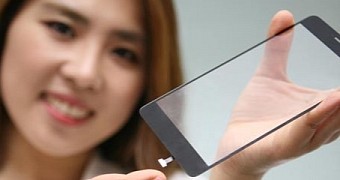Fingerprint sensors have become a must-have for manufacturers who wish to launch high-end smartphones that focus primarily on security. A recent LG Innotek press release has announced that the company will be implementing an under-glass fingerprint sensor module.
The press release comes with detailed information on the new sensor’s specifications, as well as the design improvements for the expected LG handsets. The sensor will be placed on the cover glass of the phone and will identify fingerprints in an easier and faster way.
It’s a much-needed upgrade from the previous button modules, which had some issues with respect to identifying fingerprints. The new module allows manufacturers to be more creative when it comes to placing fingerprint sensors.
The new sensor module will allow for a sleeker design, since it eliminates the need for a button to be put on the front, back or side of the phone. LG also promises to provide a cover glass of higher strength, which would protect the device from contact with water or damage from scratches.
Sensor module with a higher resistance to impact
LG has also released data on test results regarding the new fingerprint sensor. It’s set to have a false acceptance rate of only 0.002%, roughly the same as current modules. The number represents the probability of the system incorrectly recognizing someone else’s fingerprint as the owner’s. This reduces the chances of someone else unlocking your phone and accessing your personal information.
More information points out to the sensor’s size and resistance. The sensor’s adhered side and glass will be 0.0098 inches thick, with a high capacity to endure impact, according to company test results. This makes the phone more resistant to shocks, including those from being dropped on the floor.
LG is making a move in the right direction when it comes to this under-glass module, especially since the common fingerprint modules currently in use aren’t infallible. We’ve seen this on the latest iPhone SE, which often requires the user to press the home button before unlocking.

 14 DAY TRIAL //
14 DAY TRIAL //